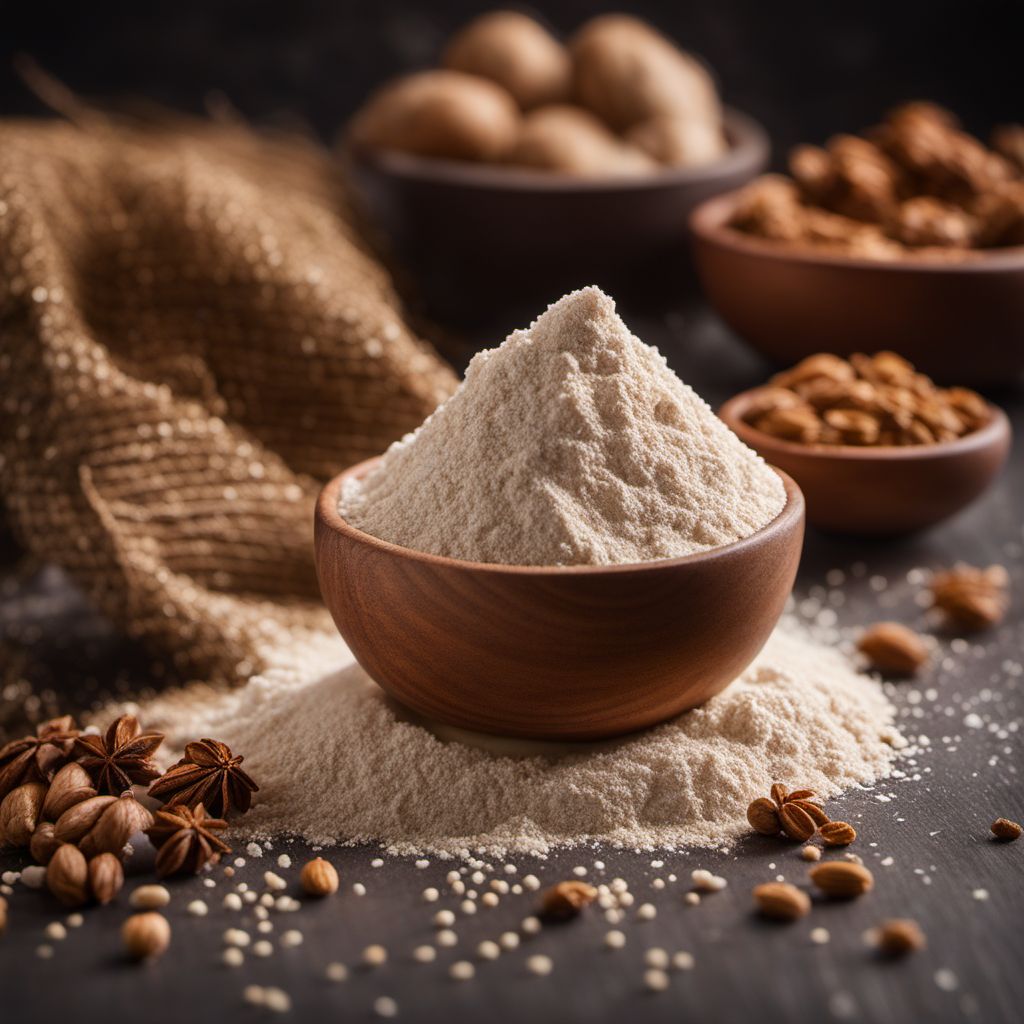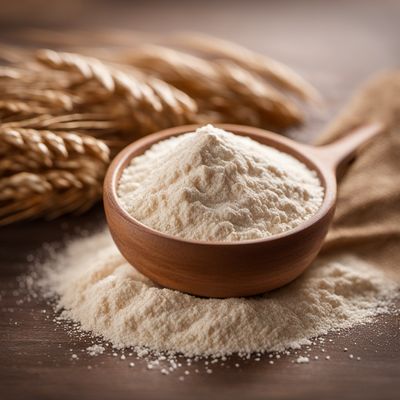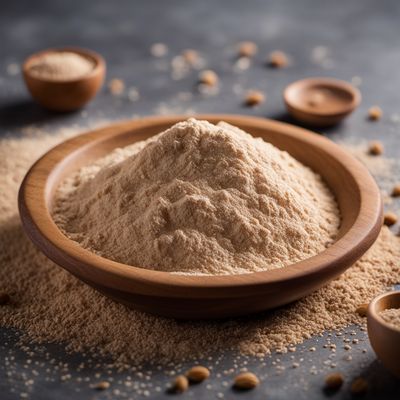
Ingredient
Rye flour, medium
Versatile Grain Powerhouse
Rye flour, medium, is a type of flour made from grinding rye grains. It has a slightly sweet and nutty flavor, with a denser texture compared to wheat flour. Rye flour is commonly used in traditional European bread, such as rye bread and pumpernickel, as well as in various pastries, pancakes, and crackers, providing a unique taste and nutritional benefits.
Origins and history
Rye has been cultivated for thousands of years and has a rich history in European cuisine. It was one of the main grains grown in Northern and Eastern Europe, where the climate was suitable for rye cultivation. Rye flour became a staple in traditional bread-making, particularly in countries like Germany, Scandinavia, and Russia. Today, rye flour is still widely used in these regions and has gained popularity in other parts of the world for its distinct flavor and nutritional value.
Nutritional information
Rye flour is a good source of dietary fiber, providing more fiber than wheat flour. It also contains essential minerals such as manganese, magnesium, and phosphorus. Rye flour has a lower gluten content compared to wheat flour, making it a suitable option for individuals with gluten sensitivities or those looking to reduce their gluten intake. However, it is important to note that rye flour is not gluten-free and may still cause reactions in individuals with celiac disease.
Allergens
Rye flour may contain gluten, which can trigger reactions in individuals with celiac disease or gluten sensitivities. It is important to check the packaging for any gluten-free certifications or labels if avoiding gluten is necessary.
How to select
When selecting rye flour, look for a medium grind that is finely ground but still retains some texture. The flour should have a light brown color and a slightly sweet aroma. It is best to purchase rye flour from reputable brands or specialty stores to ensure quality and freshness.
Storage recommendations
To maintain the freshness and quality of rye flour, store it in an airtight container in a cool, dry place, away from direct sunlight. Rye flour has a shorter shelf life compared to wheat flour due to its higher oil content, so it is best to use it within six months of purchase. For longer storage, rye flour can be kept in the refrigerator or freezer to extend its freshness.
How to produce
Rye can be grown by amateur gardeners in regions with a suitable climate for rye cultivation. It requires well-drained soil and cool temperatures. The process involves sowing rye seeds in early spring or late summer, providing adequate water and sunlight, and harvesting the mature grains when they turn golden brown.
Preparation tips
Rye flour can be used in a variety of recipes, including bread, muffins, pancakes, and cookies. It adds a distinct nutty flavor and a denser texture to baked goods. Rye flour can also be used as a thickening agent in soups and stews, or as a coating for meats and vegetables. When substituting rye flour for wheat flour in recipes, it is important to note that rye flour has less gluten, so additional binding agents may be needed to achieve the desired texture.
Substitutions
Whole wheat flour, spelt flour, or a combination of whole wheat and all-purpose flour can be used as substitutes for rye flour. However, keep in mind that the flavor and texture of the final product may differ from the original recipe.
Culinary uses
Rye flour is commonly used in traditional European bread, such as rye bread and pumpernickel. It is also used in various pastries, pancakes, and crackers. Rye flour adds a distinct flavor and texture to these dishes, making them heartier and more flavorful. Additionally, rye flour can be found in specialty bakeries and health food stores around the world.
Availability
Rye flour is commonly available in Europe, particularly in countries like Germany, Sweden, and Russia, where it is a staple in traditional bread-making. It can also be found in specialty stores and health food markets in other parts of the world.



